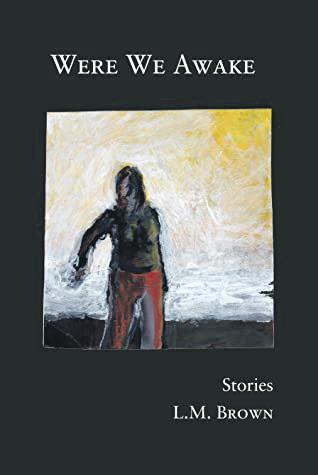
3 minute read
Were We Awake
The Write Stuff by NANCY ROBERTS
When I was first awakened to the joy of writing, short stories were my love. There was something about the genre that allowed the writer to focus tightly, write poetically, and even drop the story midway through that was both challenging and fun.
Advertisement
Also reviewed in these pages was L. M. Brown’s “Treading the Uneven Road,” stories that carried with them the distinct notes of Ireland and a bit of the unspoken and unseen.

This collection is even more spare in the telling, though it retains some of the lilt of Irish storytelling, and many of the stories take place in Ireland. But in these stories, Brown leaves us with more to ponder, more to “read in” to the story (I never realized with a wonderful expression that was until I tried to find a way to describe these tales). The title is a fragment of poetry by Emily Dickenson, which dwells on the things we could not bear “were we awake,” but we are only dreaming.
In one, a young boy confronts death through his friend’s loss of a father; then a character whose name comes up - but who doesn’t play a major role in the first story - takes over the second story, again a confrontation with life and death, youth and older age. This time, though, the character is a bit older, the life lessons more complex and confusing. And in the third, we meet the young man - a boy in the first story, and a secondary character, whose mystery is now played out for us in the conclusion of a triplet of tales.
But that’s not the end - nor the beginning. A character whose story is told in one short story might be mentioned briefly in another, deeper into the collection, so that you have to flip back to discover whether that the name is the same, but the perspective has shifted. The stories are about perspective: a child’s versus an adult; a person who has cheated and the person cheated upon; the death of someone and the ways in which that death can effect those around him. They are also about what we know and what we don’t, what we can see through one set of eyes and another, what one character can grasp and another misses completely.
If it were a novel, the writer would be forced to draw more conclusions; as a collection of short stories each “chapter” can be unique, and it’s up to us, the reader, to play an active part in ferreting out the clues, the meanings, and the interior versus exterior dialog.

The elements of life are all there in one form or another: love, childhood, maturation, death, illness, health, food and drink, merriment and sorrow, sin and absolution.
The “Irish,” while there in the form of place names and the sacraments of the Church, certain practices and the turn of a phrase, is not as marked as it was in the earlier book. But there is a complexity of relationships, and the tie and pull of family versus freedom, staying put or running away, that are thematic to most fiction, but particularly to the Irish.
But unique to this book is that shifting ground - the uneasiness of having seen this character before, knowing what they know as we witness them from a new and unknowing pair of eyes, learning something new about them that we didn’t know as their own story unfolded, or realizing that a character we met at an earlier time has been lying to us, or themselves, all along. It’s a brilliant trick of writing - one not easily accomplished. One story serves both as an hors d’oeuvre, or a complete meal, and then again as a side dish to another main course. And the only real through line is the complexity of the human condition.











